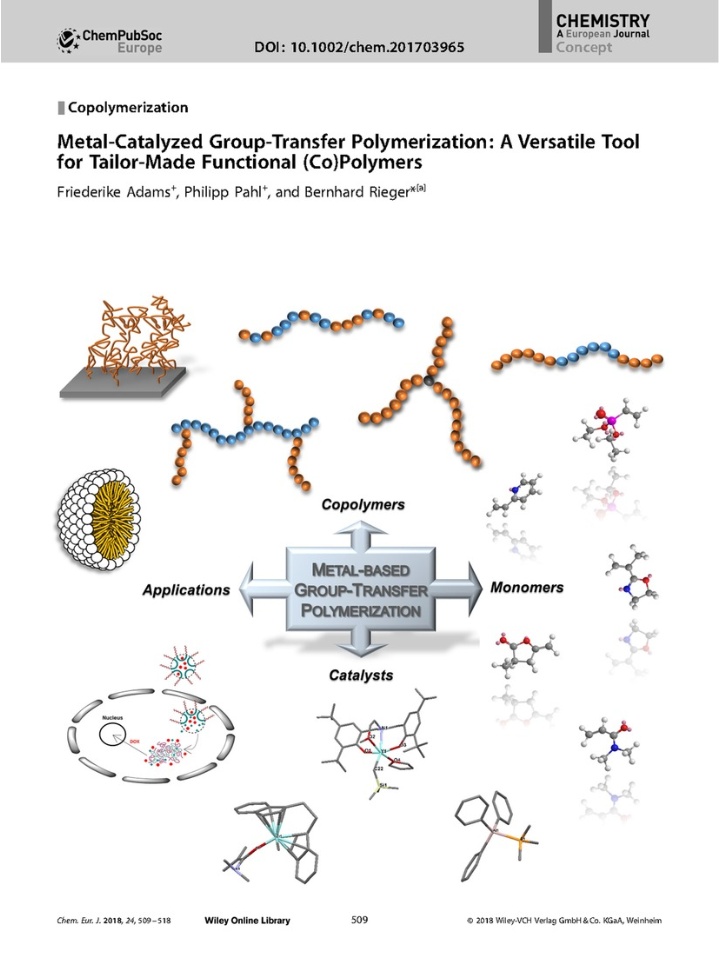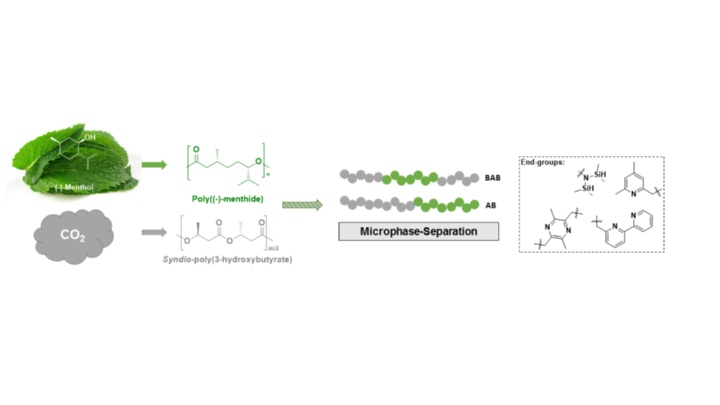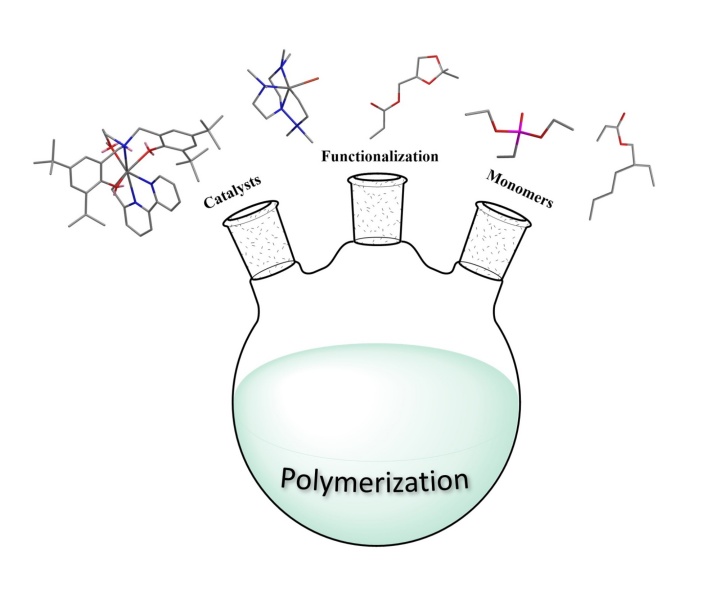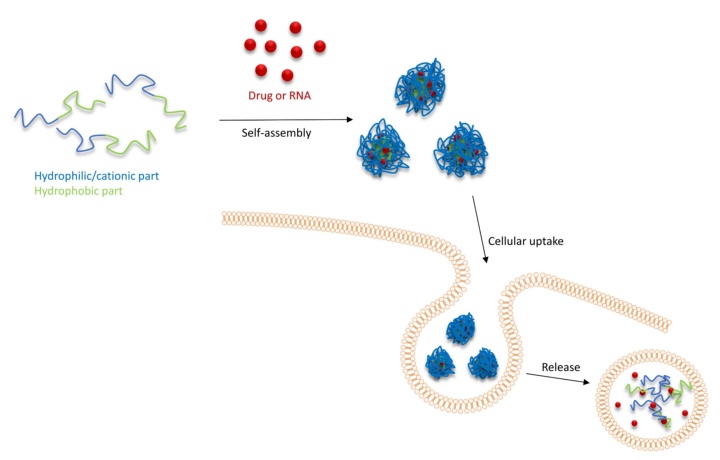Precision Polymers for Pharmaceutics
Field of Research
Our group is located at the interface of polymer chemistry and pharmaceutical sciences. We are focusing on the design of innovative drug delivery systems using sustainable and intelligent materials. These systems are based on intelligent, bio-based or biodegradable polymers that are synthesized using sophisticated polymerization techniques. These techniques include radical systems and metal-organic based catalysts. We develop tailor-made and advanced catalysts and monomers to meet the special needs for each specific pharmaceutical application.
Our research topics include:
- Living-type polymerizations
- Blockcopolymerizations
- Catalyst and Initiator design
- Post-polymerization functionalization
- Polymer analysis
- Drug and nucleic acid encapsulation
- Formulation development
- In vitro evaluation of nanoparticles
The investigation of polymerization techniques, which allow the precise synthesis of macromolecules is of exceptional interest. Ionic or controlled radical polymerization are capable living-type methods for the generation of uniform polymers. However, even these approaches reach their limits in certain issues. In the last decades, group-transfer polymerization (GTP) and especially metal-catalyzed GTP have proven to give access to a plethora of tailor-made homo- and copolymers based on α,β-unsaturated monomers. Thereby, GTP has established its potential in the development of functional and smart polymers.
In our group, rare-earth metal-mediated GTP (REM-GTP) was established with nonmetallocene lanthanides as a multifunctional method for the efficient synthesis of high-precision polymers with variable tacticity, controllable molecular weights, and narrow molar mass distributions. We generated a toolbox of catalysts, in which each individual catalyst favors a particular monomer, stereoselectivity or end-group fidelity.
Coordination ring-opening polymerization (ROP) is considered to be the classic or conventional way for lactone polymerization. Studies have led to a variety of metal-based catalysts which are still unmatched in terms of controlled polymerization conditions. Especially, the possibility to tailor catalysts provides a toolbox for different thermodynamic circumstances or the stereoselective synthesis of functional materials.
Extensive research on lanthanide-based catalysts is carried out as previous studies showed the high potential of these metals to perform controllable reactions. Compared to other catalyst systems, in particular yttrium complexes supported by single-site dianionic aminoalkoxy-bis(phenolate) ligands provide the opportunity of a rapid and controlled ROP, resulting in high molar mass polymers under mild conditions.
The availability of polymerization methods facilitating a precise synthesis of polymers with controllable molecular weights, narrow molecular weight distributions, precise block copolymer formation and variable end groups is a basic prerequisite for establishing polymers for gene and drug therapy. Such polymers can be synthesized efficiently and tailor-made using living radical polymerization techniques such as reversible addition-fragmentation chain-transfer polymerization (RAFT) or single-electron transfer living radical polymerization (SET-LRP).
Post-polymerization functionalization is a critical tool in preparing functional materials. Functionalization is performed after a non-functionalized polymer was synthesized. One of the most common ways in our lab to attach functionality onto a preexisting polymer backbone is through active ester groups, click reactions and thiol-ene reaction. In addition, we use precise end-groups from polymers synthesized via living routes for further functionalization.
Polymeric nanocarriers can easily be tailored with respect to size, chemical composition, shape, and surface properties. These carriers increase the solubility and protect the therapeutic agents against harsh biological conditions, and allow for controlled and targeted release of elevated dosages, which reduces off-target toxicity. Furthermore, as drug carriers, polymeric micelles should be stable at low concentrations, which enables long in vivo circulation times and inhibits premature drug release. In addition, thermoresponsive or pH-sensitive triggers of multiresponsive polymers can be used to further enhance these systems as drug delivery carrier.
In general, nucleic acids show a high affinity towards cationic polymers due to electrostatic interactions to form so called polyplexes. Amine-containing polymers are positively charged at physiological pH and are therefore commonly used for RNA delivery. Our research focusses on the design of brushed poly(acrylamide) and poly(acrylates) with polyamine pendant groups.





